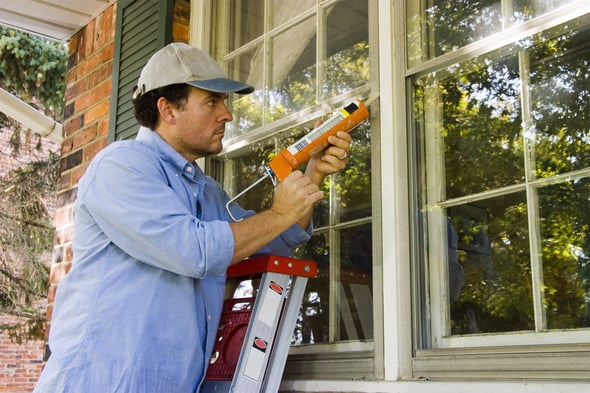
Your grandma, grandpa, mother or father had a point when they issued warnings while the air conditioner was running. All that cool air really was going out the window.
Today, technology has advanced to the point that the U.S. Department of Energy and other energy conservation experts can pinpoint those air leaks and calculate how they add up – demonstrating why sealing your home is crucial for energy conservation and energy savings every month.
Add up the savings when you seal your home
Since the “father of air conditioning,” Willis Haviland Carrier, debuted his invention in 1902, air conditioning has found a welcome presence in American homes in myriad climates. Today, two-thirds of all American homes are equipped with air conditioners. They consume about 5 percent of all the electricity produced in the United States and collectively cost homeowners more than $11 billion (yes, “billion” with a “b”) to operate.
You know better than anyone what it costs you every month to run your air conditioner. But consider what you could be saving when you make a concerted effort to seal leaks in your home for energy conservation:
- You could preserve as much as 20 percent of the cool air in the summer (and the warm air in the fall and winter) that you're paying for – and you'll feel more comfortable afterward, too.
- Experts say that a mere $25 investment in caulk and weatherstripping could result in energy savings amounting to hundreds of dollars a year.
Add up where you're losing cool air
Just as your family members suspected, doors and windows are prime spots for air leaks. The department of energy has tracked down all the locations that air leaks occur, as well as how much air may be escaping from each spot:
- Ceiling, floors and walls: 31 percent
- Ductwork: 15 percent
- Fireplace: 14 percent
- Plumbing holes: 13 percent
- Doors: 11 percent
- Windows: 10 percent
- Fans and vents: 4 percent
- Electrical outlets: 2 percent
A calculator from any generation would tabulate those losses at 100 percent, but air leaks can be persistent and so also can spring from:
- Attic hatches
- Baseboards
- Cable TV and phone lines
- Ceiling fans
- Recessed lights
- Skylights
- Switch plates
Seal your home for energy conservation
You can put that $25 investment in caulk and weatherstripping to good use, especially if you know which tool to use where:
- Use caulk on stationary (non-moving) parts where a leak, crack or hole is less than 1/2-inch wide. Be sure to remove old caulk first and clean and dry the area before applying a new layer. Wait for a dry day in which the temperature reaches at least 45 degrees.
- Use weatherstripping around movable parts. Weatherstripping is available in felt, metal, plastic and rubber and compresses when components are closed.
Once you've taken the time to seal your home for energy conservation, it's equally crucial that you insulate it. “Insulation in your home provides resistance to heat flow,” the department of energy says. “The more heat flow resistance your insulation provides, the lower your heating and cooling costs. Properly insulating your home not only reduces heating and cooling costs, but also improves comfort."
To ensure your home is insulated thoroughly and correctly, contact the most experienced and trusted insulation company in Las Vegas: First Quality Roofing & Insulation. By the time we're done, you might even invoke words of approval that only your family would use.

















